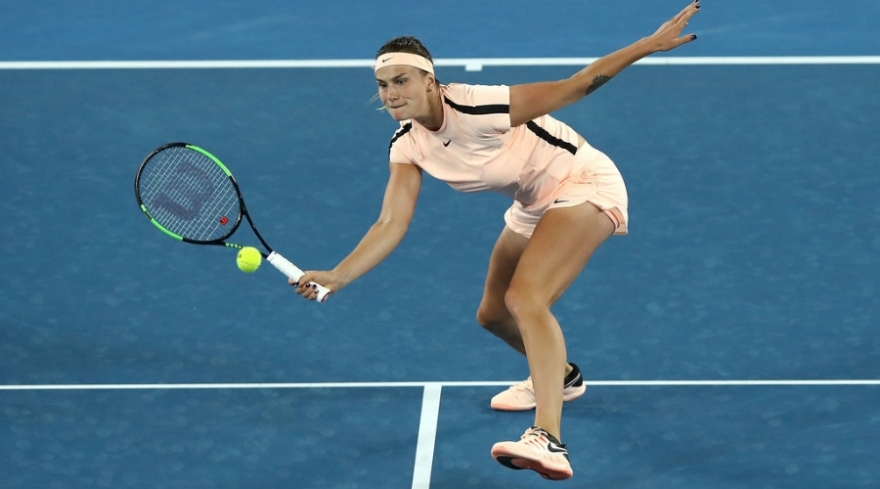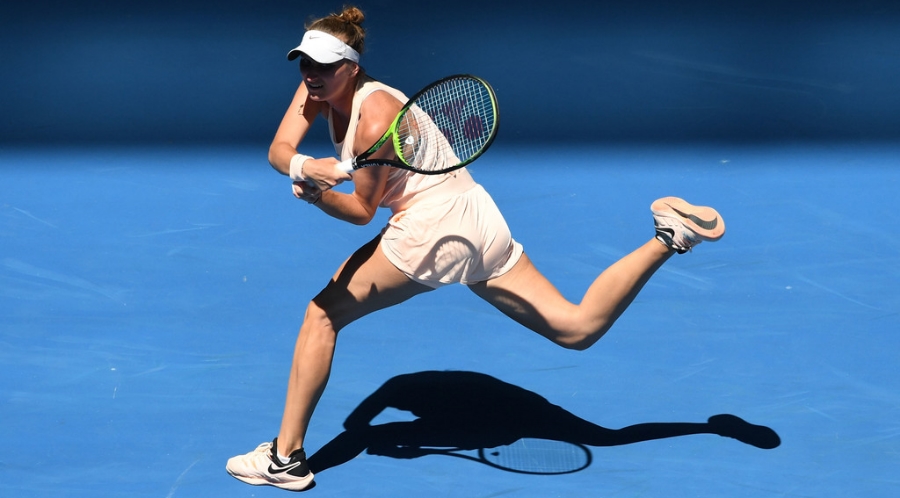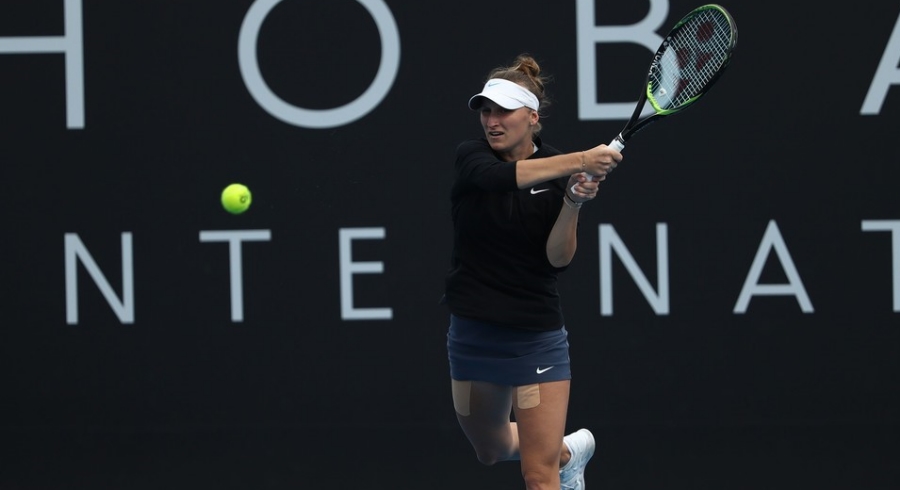Under normal circumstances, any tennis fan would justifiably get excited to watch an encounter between Petra Martic (no.32) and Marketa Vondrousova (no.73), two of the more talented players in the WTA. Both women are fine shot-makers, largely thanks to the large variety of hits they can produce from any position on the court. This particular second-round match between the two at the Australian Open, however, did not meet the expectations despite the close scoreline.
There were a number of eye-opening winners hit by each player – that much was expected in any case – and neither was shy about digging deep into her bag of tricks. Yet, the 6-4 7-5 victory in favor of the Croatian player Martic was also marked by her piecemeal performance that turned out to be just sufficient, largely because of the progressively erratic play by her opponent throughout the match.
In an oddball first set, neither player held serve until 4-3 for Martic. It is not that this never happened before, although it’s quite rare. What made this particular start atypical was that neither player served badly or returned particularly well up to that point, which are the main reasons why such oddity occurs. Marketa served put 64% of her first serves in while Petra did the same at 72% up to that juncture in the match. Although it should be noted that Vondrousova was returning aggressively at times, one can hardly point to spectacular returning as the reason for which neither player could buy a service hold if their lives depended on it. They did not even get close to holding! By the time that eight game began, the total number of game-point opportunities that both players had on their serves was… wait for it… zero!
It was as if each got touched by some magic wand every time the serve changed hands. The server would all of a sudden sail balls out and wide, or slam them into the net, while the returner would suddenly turn solid as a rock, adding a winner or two in the mix for good measure.
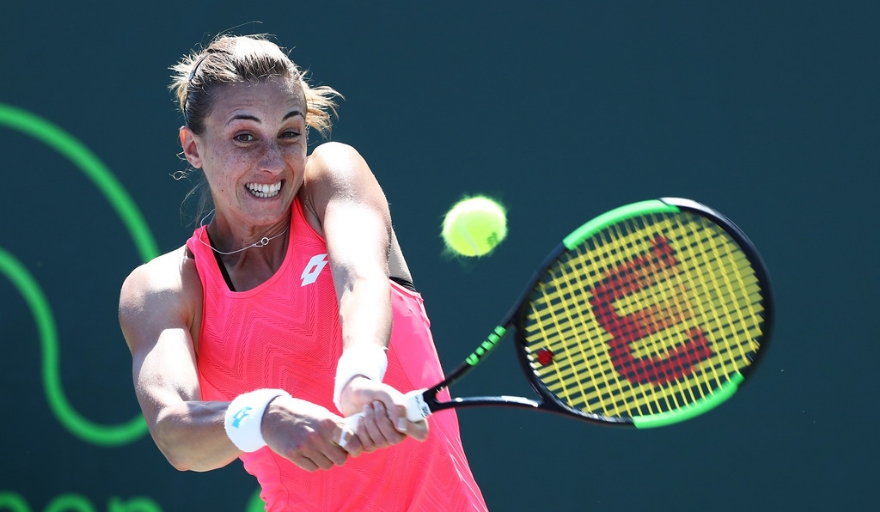
A magic wand of a different kind arrived, I presume, after that game, one that brought some degree of normalcy back to court number 8 at Melbourne Park. Martic held serve the next two times to grab the first set 6-4. Through both periods of the set, the “atypical” portion and the “normal” one, Martic made seven unforced errors, a tad better than Vondrousova who committed 12 of them. Simply put, the player that ‘donated’ less won the first set.
[Reminder: I do my own count for unforced errors, so my numbers may differ slightly than the official ones. For example, I don’t include double faults in this category, to cite one possible difference among others.]
Vondrousova began the second set with a clear willingness to get more aggressive from the baseline. She also appeared to be determined to approach the net if any short-ball opportunity presented itself. It worked. She won all but one of the point in which she approached the net in the first four games of that set.
There was one moment where Vondrousova could have truly taken over the reins. She was up 2-1 and had a break-point opportunity with Martic serving at 30-40. She had the chance to grab a two-game lead for the first time in the match and truly swing the pendulum of momentum her way, at least in this set. Martic was showing signs of frustration, accompanied by racket-throwing or self-monologuing outbursts, certainly due the pressure she felt from her opponent’s increasingly aggressive tactics.
Vondrousova got the return in play and a rally ensued. She committed a dreadful unforced error on her forehand that briskly ended the rally and brought the score to deuce. That forehand shot landed to the bottom of the net, literally, and rolled to the other side of the court through that little opening at the bottom of the net caused by the net strap being hooked to the ground. Following the error, Vondrousova bent and grabbed her right knee, rolled her hand over it (more on this later).
Martic served an ace at deuce. Vondrousova followed that up by dipping a routine forehand return into the net again on Martic’s second serve. Just like that, her one chance at taking charge vanished, the only one that she had in the match.
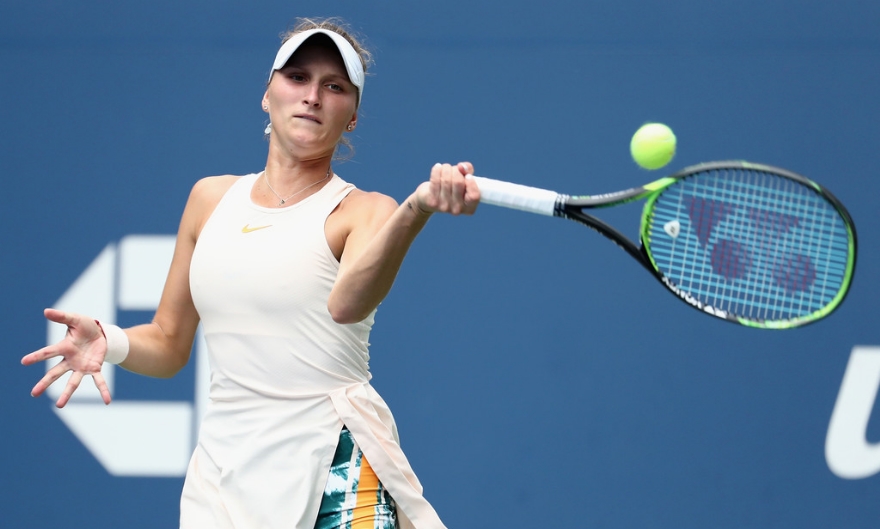
Both players sprayed even more unforced errors in the second set than they did in the first. Most of Marketa’s 18 errors (Petra had 11) came in the last several games of the second set after her momentum was halted.
Martic eventually grabbed a 5-3 lead but could not put Vondrousova away due to a few errors of her own. But it almost felt like a delay of the inevitable. At 5-5, Martic won the next eight out of nine points, the last three on unforced errors by Voundrousova, and ended the match after one hour and 32 minutes.
In the upcoming days, Vondrousova must confront a bigger concern than the loss of a tennis match. She clearly has a right-leg problem that has not gone away. It already hindered her progress once in the spring of 2018 when she had to retire in the second round in Stuttgart, leading 3-2 in the third vs. Svitolina. Then it reappeared in September, forcing her to stay away from competition until this week in Melbourne. On Monday, after her straight-set win over Evgeniya Rodina in the first round, Marketa did admit to suffering from pain on that same leg, explaining that it has now shifted to her knee. She admitted that she will need to “deal with it” after the Australian Open in one way or another.
As for Martic, she will need to perform at a significantly higher level than she did on Wednesday, when she takes on fifth-seeded American Sloane Stephens in the third round on Friday. Petra possesses the tools to dismantle anyone’s game on a given day, but Stephens can neutralize the strenghts of an opponent better than most WTA players can, thanks to her on-court sense and counter-punching skills. If they both play at a high level, expect the quality of tennis to skyrocket in that match.
————— Random final thought:
I found it puzzling that Martic seemed fine with engaging in so many cross-court rallies from her forehand (arguably her less versatile side) to Vondrousova’s backhand. I did not count the win-loss numbers on them (I should have, in retrospect) but I have a feeling that a large percentage ended in Vondrousova’s favor, which is not surprising. She seemed perfectly content with sending the ball right back cross-court to Martic’s forehand and waiting for her opportunity to pull the trigger. That’s no surprise, considering that she has the ability to accelerate better – or nail the occasional, flat, warp-speed winner – with her backhand. She is a bit more prone to errors on her forehand, thus more apprehensive on that side.

